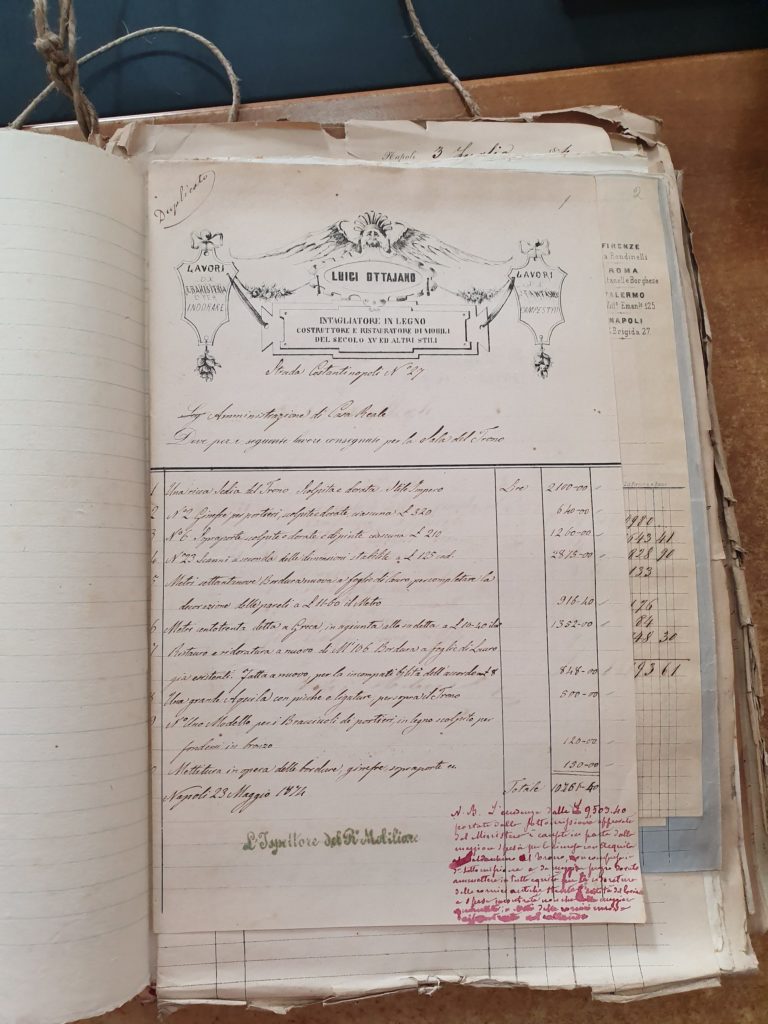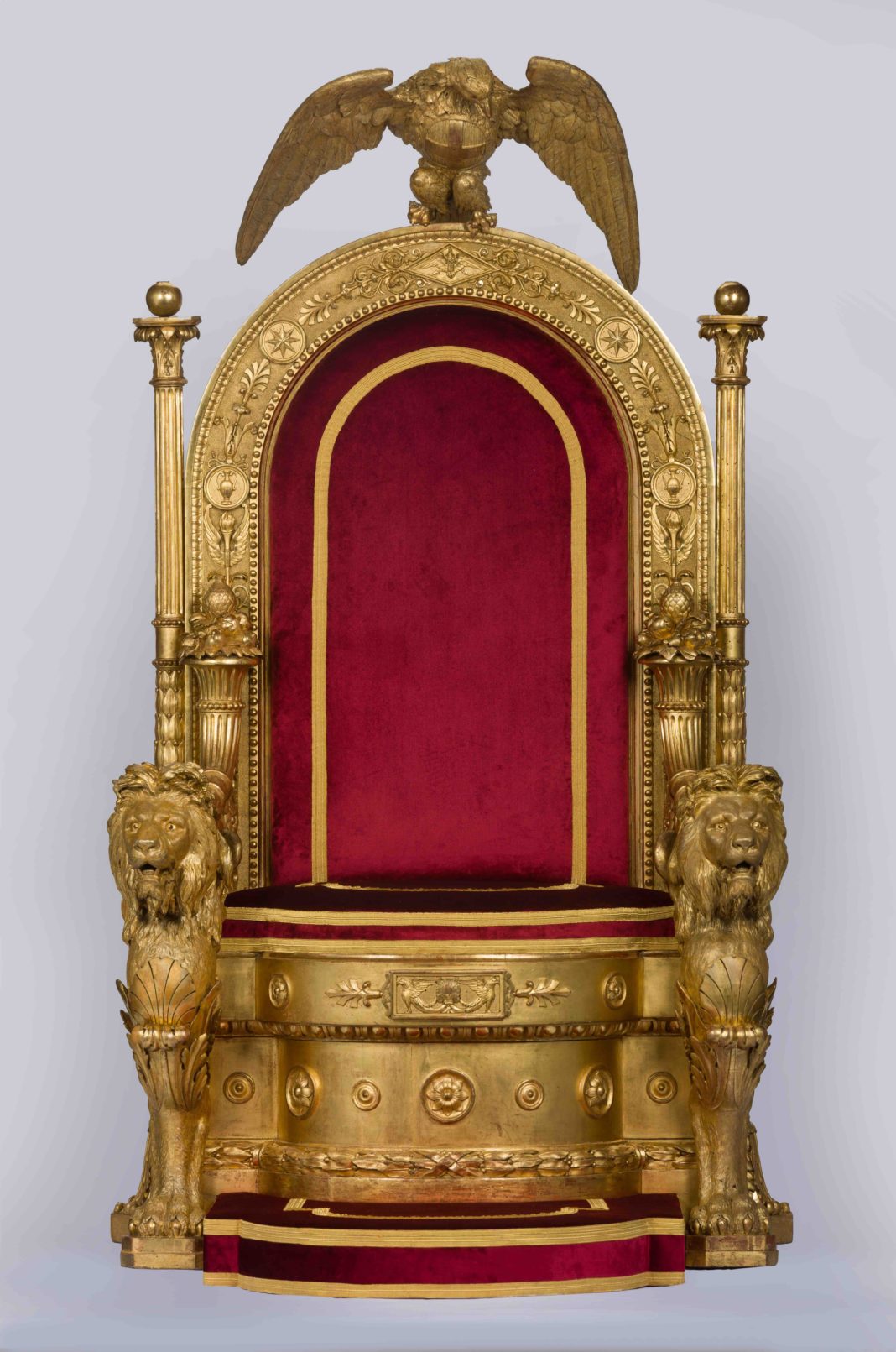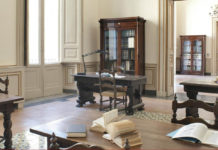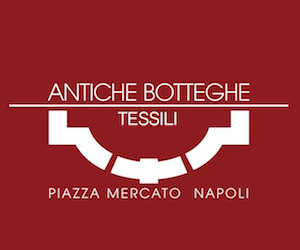Non è borbonico ma sabaudo. Un’affermazione ben documentata che diventa notizia alla Reggia di Venaria a Torino dove è stato appena presentato il restauro del trono del Palazzo Reale di Napoli, considerato fino a oggi di fattura borbonica, risalente al 1845-50. In realtà fu commissionato dai Savoia e liquidato nel 1874 e questo aneddoto rivela quanta importanza la nuova dinastia attribuiva al complesso monumentale e alla città, ex capitale del Regno borbonico
Così si riscrive la storia del sedile reale esposto nella residenza torinese, anticipazione della XX edizione di una delle più importanti iniziative del Progetto Cultura di Intesa Sanpaolo, che sarà inaugurata al Palazzo delle Esposizioni di Roma alla fine dell’estate. Il trono ritornerà al Palazzo Reale di Napoli nel febbraio del 2026.
Il trono è stato trasferito al Centro Conservazione e Restauro La Venaria Reale di Torino il 12 settembre: un intervento realizzato proprio grazie al progetto “Restituzioni” di Intesa Sanpaolo. Il trono è stato sostituito temporaneamente da una seduta borbonica settecentesca.
Durante questi otto mesi di lavori, sono stati avviati studi e ricerche che hanno svelato la verità grazie allafattura presentata dall’intagliatore Luigi Ottajano, che testimonia l’esecuzione dell’intero trono (“una ricca sedia del trono scolpita e dorata stile Impero”) e di altre pose in opera per il rinnovamento della Sala. (Carteggio del 1874).
Già creatore con Domenico Morelli della culla per la nascita di Vittorio Emanuele III, donata dalla città di Napoli alla Regina Margherita e oggi esposta presso la Reggia di Caserta, Ottajano era ritenuto realizzatore solo dell’aquila con scudo crociato sul petto, emblema della nuova casa regnante, mentre si faceva risalire la sedia all’età borbonica.
Il trono, con sedile a tamburo, presenta elementi di stile Impero che rimandano all’artigianato della Restaurazione, come i braccioli decorati da leoni alati di grande effetto scultoreo. La spalliera di forma ottagonale è ornata da borchie e rosette classicheggianti che compaiono, ad esempio, nel trono di Napoleone I, disegnato da Charles Percier e Pierre-François Fontaine (oggi al Louvre).
Conclude Paola Riccardi, dirigente delegata del Palazzo Reale di Napoli: «Il documento è stato rinvenuto presso l’Archivio di Stato di Napoli dallo studioso Carmine Napoli, oggi ex funzionario, che ringraziamo per la sensazionale scoperta. Notizia approfondita dai colleghi che hanno condotto lo studio della documentazione parallela conservata presso l’Archivio di Stato di Napoli da cui proviene il materiale».

Turin/ Reggia di Venaria, the Neapolitan throne restored: it was commissioned by the Savoy not the Bourbons. A document from the State archives reveals it
It is not Bourbonic but Savoyonic. A well-documented assertion that becomes news at the Reggia di Venaria in Turin, where the 1845-50 restoration of the throne in the Royal Palace of Naples, previously thought to be a Bourbon work, has just been unveiled. It was actually commissioned by the Savoy and liquidated in 1874, and this anecdote shows how much importance the new dynasty attributed to the monumental complex and to the city, former capital of the Bourbon kingdom.
This is how the history of the royal seat is rewritten in the Turin Residence, a preview of the 20th edition of one of the most important initiatives of Intesa Sanpaolo’s Progetto Cultura, which will be inaugurated at the Palazzo delle Esposizioni in Rome at the end of the summer. The throne will return to the Royal Palace of Naples in February 2026.
The throne has been transferred on September the 12th to the Venaria Reale Conservation and Restoration Centre in Turin: an operation made possible thanks to Intesa Sanpaolo’s “Restitutions” project. The throne has been temporarily replaced by a Bourbon throne from the 18th century.
During these eight months of work, studies and research were carried out that uncovered the truth thanks to the invoice presented by the carver Luigi Ottajano, which certifies the execution of the whole throne (“a rich throne chair carved and gilded in Empire style”) and other poses in place for the renovation of the hall. (1874 correspondence).
Together with Domenico Morelli, Ottaiano created the cradle for the birth of Vittorio Emanuele III, donated by the city of Naples to Queen Margherita and now on display in the Royal Palace in Caserta. Ottaiano was believed to be the only the maker of the eagle with a crusader’s shield on its breast, emblem of the new ruling house, while the chair was traced back to the Bourbon era.
The throne, with a drum seat, has Empire-style elements that recall the craftsmanship of the Restoration, such as the armrests decorated with winged lions to great sculptural effect. The octagonal backrest is adorned with Classical-style studs and rosettes, such as those found on Napoleon I’s throne, designed by Charles Percier and Pierre-François Fontaine (now in the Louvre).
Explains Paola Riccardi, delegated manager of the Royal Palace of Naples: “The document was found in the State Archives of Naples by the scholar Carmine Napoli, now a former official, whom we thank for this sensational discovery. The news was deepened by colleagues who carried out the study of parallel documentation kept at the State Archives of Naples from which the material came”.










